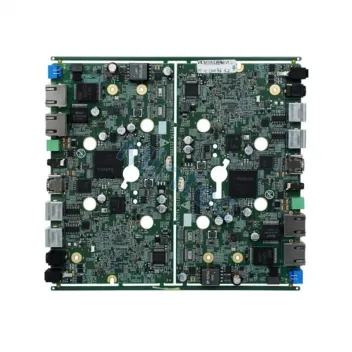Knowledge of PCBA Manufacturing Process
Even if you don't know them by name, most people are familiar with printed circuit boards (PCBs), or at least have seen them at some point in their lives. They are the thin green boards found in everything from TV remotes to washing machines, laptops, medical devices, and other electronics.
What is less well known is the manufacturing process behind the assembly of PCBs. As the backbone of our modern lives, the PCBA manufacturing process has quality controls built in to ensure higher yields and lower failure rates.
If your job is related to manufacturing, electronics or semiconductors, it's useful to know how PCBA manufacturing works. Therefore, we have broken it down into component steps.
1. PCB Development
The axiom of measure twice, cut once doesn't exactly apply to PCBA manufacturing, but the basic idea remains. Before a board can be approved for mass production, it needs to be properly designed and tested. Any defects need to be eliminated at this stage to ensure that no problems arise later.
There are several factors to keep in mind when it comes to PCB design. As always, cost effectiveness is always important, but so is design quality, manufacturing tolerances, and following the allocated development time. Simpler circuits can be approved faster, while more complex PCB designs may require more iterations to get them right.
2. PCB Manufacturing
Once the engineer is satisfied with the chosen PCB design, we can move on to the actual PCBA fabrication. This is where the schematic file is fed into a special printer that overlays the design onto a laminate pre-bonded to copper to form the PCB structure. An important step in this process is cleaning to remove dust and other contaminants that may affect the quality of the final PCB.
The copper is then precisely etched away to show the electrical paths and gaps of the components. It is then checked for conformance to the original PCB design. The final board is cleaned one more time to remove contaminants before being sent for testing and assembly.
PCBA manufacturing certainly involves more details, but the above gives a general guide to the process.
3. PCB testing
Once the first few boards are manufactured, another round of testing takes place. Some problems with the PCB may only be revealed after the actual board is manufactured, even if they pass the initial development checks. Performing another round of testing can solve the problem and optimize the entire process.
4. PCB assembly
Once the PCB itself is ready, the next stage is the actual installation of the components through the soldering process. This process involves many technologies and innovations that can be automated to accomplish very precise mounting and soldering.
Once the PCB assembly is complete, the finished board is ready for packaging and shipping, thus completing the entire PCBA manufacturing process.
Although PCBA manufacturing can sometimes seem like a complex and even tedious process, the results speak for themselves. PCBs are reliable and versatile engineering marvels that help power our electronics world. multiple checks, optimizations and quality control measures during the PCBA manufacturing process help ensure that the product is consistent, cost-effective and provides a high level of performance.

评论
发表评论